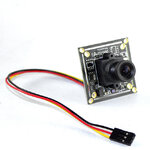Externet
Advanced Member level 2
- Joined
- Jan 29, 2004
- Messages
- 579
- Helped
- 28
- Reputation
- 58
- Reaction score
- 29
- Trophy points
- 1,308
- Location
- Mideast US
- Activity points
- 5,660
Can you suggest how can this be done ? Analog SSTV, NO computers, no high speed, nothing digital. Same way it was done in the sixties...
Any sample circuits for the modulator and the demodulator sections that you can link ?
What considerations are missing ? A modern surveillance camera does not scan slowly... How is its video interfaced into the modulator ?
Any sample circuits for the modulator and the demodulator sections that you can link ?
What considerations are missing ? A modern surveillance camera does not scan slowly... How is its video interfaced into the modulator ?

